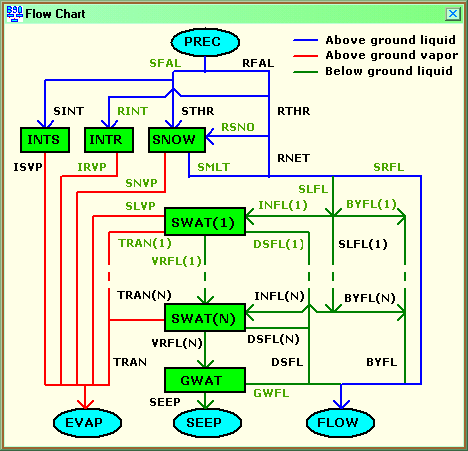Hi,
1) GWAT is the groundwater storage. So it depends on its initial condition. Then it is filled by the water that drains at the bottom of the soil layer, and emptied by the water computed as GWFL and . See flow chart in the documentation and if something is missing there is always the documentation of the base model: http://www.ecoshift.net/brook/b90doc.html
2) I don't know what percentages you refer to from the input of LWFBrook90R. Generally, the model only uses the values of the van Genuchten parameters to distinguish different soil layers as specified in soil_horizons.csv, please see: https://fabern.github.io/LWFBrook90.jl/stable/user-guide/#Structure-of-input-data
3) This is difficult to diagnose without the specific simulation. There are many options specified and it requires some understanding of the underlying assumptions to translate the default forest parameters to croplands. In principle one should also be able to simulate croplands with LWFBrook90.jl. You mention that you expect higher actual evapotranspiration ETa. However, you also mention that you have no rainfall and very dry soil. So given these information it makes sense to me that evapotranspiration is low.

Hello, I'm simulating a case study of a crop field with LWFBrook90.jl model but there are some issues with the results. First, the calculated GWAT doesn't make sense because even the soil is almost dry and there is no precipitation, there are high amounts of GWAT. I was wondering how it calculates GWAT? Second, in LWFBrook90R there is a representation of soil type percentages as input values but not in LWFBrook90.jl. How does the model distinguish between different soil types other than hydraulic conductivity values? Third, I used the command "get_water_partitioning" to get the values of ETa in particular but also that doesn't make sense where for the whole period of almost one year, the estimated ETa is around 200 mm which for a cropping season is too low. Is there any other criteria maybe assumed that this case of crop land wouldn't make a good result? Thanks